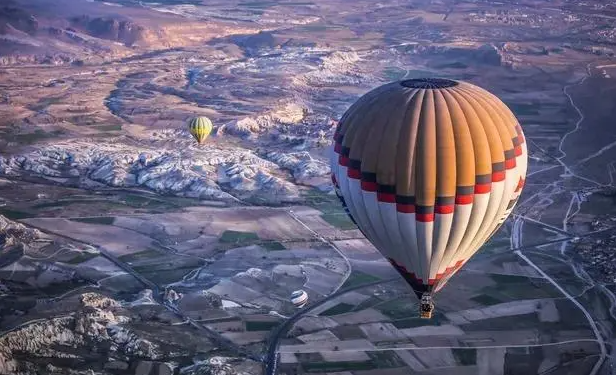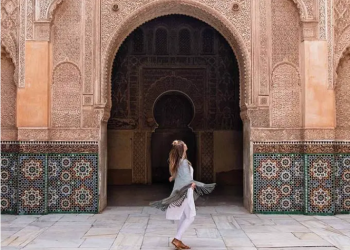Introduction
While major tourist cities boast iconic landmarks and must-visit attractions, there’s often a wealth of hidden gems waiting to be discovered by intrepid travelers. From tranquil parks to charming neighborhoods, these lesser-known attractions offer a glimpse into the authentic culture and local life of a destination. In this article, we’ll uncover some of the hidden gems in major tourist cities around the world, inviting you to explore beyond the tourist hotspots and uncover hidden treasures.
1. The High Line, New York City
The High Line is a unique urban park built on a historic freight rail line elevated above the streets of Manhattan’s West Side. Originally slated for demolition, the High Line was transformed into a green oasis that meanders through the city, offering stunning views of the skyline and Hudson River. Visitors can stroll along the elevated walkway, relax on benches amidst lush greenery, and enjoy public art installations and cultural events that showcase the creativity of New York City.
2. Montmartre, Paris
Montmartre is a picturesque neighborhood located on a hill in the northern part of Paris, known for its bohemian charm and artistic heritage. Home to the iconic Sacré-Cœur Basilica and bustling Place du Tertre, Montmartre has long been a haven for artists, writers, and musicians seeking inspiration in its winding streets and historic cafes. Explore hidden gems such as Le Clos Montmartre vineyard, tucked away in a secluded corner of the neighborhood, or Le Consulat, a beloved bistro frequented by locals and tourists alike.
3. Dotonbori, Osaka
Dotonbori is a vibrant entertainment district in Osaka, Japan, renowned for its neon lights, bustling streets, and mouthwatering street food. Visitors can stroll along the canal-lined promenade, sampling local delicacies such as takoyaki (octopus balls), okonomiyaki (savory pancakes), and kushikatsu (deep-fried skewers). Don’t miss the iconic Glico Running Man sign or the retro charm of Hozenji Yokocho alley, where traditional izakayas and teahouses beckon weary travelers with warm hospitality.
4. Gyeongbokgung Palace, Seoul
Gyeongbokgung Palace is the largest and most iconic of Seoul’s five grand palaces, dating back to the Joseon Dynasty. While the main palace grounds are a popular tourist destination, there are lesser-known areas to explore, including the tranquil Hyangwonjeong Pavilion and the picturesque Gyeonghoeru Pavilion. Visitors can also participate in traditional cultural activities such as hanbok (Korean traditional dress) rentals and royal guard changing ceremonies, immersing themselves in the rich history and culture of Korea.
5. Buda Castle, Budapest
Buda Castle is a historic fortress perched atop Castle Hill overlooking the Danube River in Budapest, Hungary. While the castle itself is a major tourist attraction, there are hidden courtyards and attractions waiting to be discovered by curious travelers. Explore the underground labyrinth of Buda Castle, home to mysterious caves and tunnels, or wander through the charming cobblestone streets of the nearby Fisherman’s Bastion, offering panoramic views of the city below.
6. Trastevere, Rome
Trastevere is a charming neighborhood nestled on the west bank of the Tiber River in Rome, Italy, known for its narrow cobblestone streets, medieval churches, and authentic Roman trattorias. Escape the crowds of the city center and wander through Trastevere’s labyrinthine alleys, discovering hidden squares and secret gardens tucked away from the tourist trail. Sample traditional Roman cuisine at family-owned osterias, where locals gather to share stories and savor the simple pleasures of la dolce vita.
7. Plitvice Lakes National Park, Croatia
Plitvice Lakes National Park is a natural wonderland located in central Croatia, renowned for its cascading waterfalls, crystal-clear lakes, and lush forests. While it’s a popular destination for nature lovers and outdoor enthusiasts, there are ways to escape the crowds and experience the park’s pristine beauty in solitude. Venture off the beaten path to lesser-visited trails and viewpoints, or visit during the early morning or late afternoon when visitor numbers are lower, allowing you to immerse yourself in the tranquility of this UNESCO World Heritage site.
Conclusion
Exploring hidden gems in major tourist cities offers a unique opportunity to discover the authentic culture, history, and natural beauty of a destination beyond the usual tourist attractions. Whether you’re strolling along the High Line in New York City or savoring street food in Dotonbori, these lesser-known gems invite you to step off the beaten path and create unforgettable memories in some of the world’s most captivating cities.

FAQs After The Conclusion
1. How can I access the High Line in New York City?
- The High Line is accessible via several staircases and elevators along its route, with entrances located at Gansevoort Street, 14th Street, 16th Street, and 30th Street. Visitors can access the park from various points throughout Manhattan’s West Side.
2. Are there guided tours available for exploring Montmartre in Paris?
- Yes, there are guided tours available for exploring Montmartre, led by knowledgeable local guides who provide insights into the neighborhood’s history, culture, and hidden gems. Visitors can choose from walking tours, food tours, and art tours to explore Montmartre’s unique charm.
3. What is the best time to visit Dotonbori in Osaka?
- Dotonbori is lively day and night, but it’s especially vibrant in the evening when the neon lights illuminate the streets and the aroma of street food fills the air. Visit Dotonbori in the evening to experience its bustling atmosphere and sample its delicious culinary delights.
4. Can I visit Gyeongbokgung Palace in Seoul wearing a hanbok?
- Yes, visitors are encouraged to wear hanbok when visiting Gyeongbokgung Palace, as it allows them to immerse themselves in the traditional culture and heritage of Korea. Many rental shops near the palace offer hanbok rentals for a fee, allowing visitors to dress up and explore the palace grounds in style.
5. How do I get to Buda Castle in Budapest?
- Buda Castle is accessible by foot, public transportation, or funicular railway. Visitors can walk up Castle Hill from the Danube River or take a tram or bus to the Castle District. Alternatively, they can ride the historic funicular railway from Clark Ádám Square to the castle grounds.
6. Are there any guided tours available for exploring Trastevere in Rome?
- Yes, there are guided tours available for exploring Trastevere, led by knowledgeable local guides who provide insights into the neighborhood’s history, culture, and hidden gems. Visitors can choose from walking tours, food tours, and photography tours to discover the secrets of Trastevere.
7. Can I swim in the lakes at Plitvice Lakes National Park?
- Swimming is not allowed in the lakes at Plitvice Lakes National Park, as it is a protected natural area and swimming could disturb the fragile ecosystem. However, visitors can enjoy boat rides on the lakes and scenic walks along designated trails to experience the park’s beauty up close.
8. Are there accommodations available near Plitvice Lakes National Park?
- Yes, there are accommodations available near Plitvice Lakes National Park, including hotels, guesthouses, and campgrounds. Visitors can choose from a range of options to suit their budget and preferences, with many accommodations offering stunning views of the surrounding landscape and easy access to the park’s trails and attractions.








